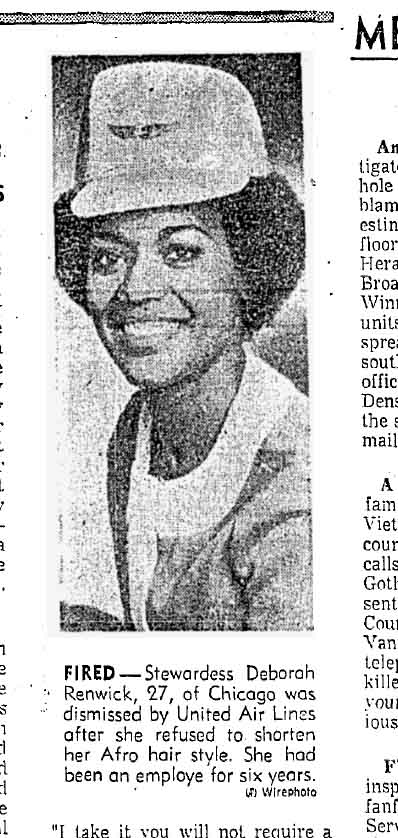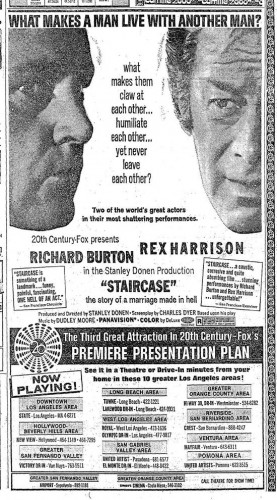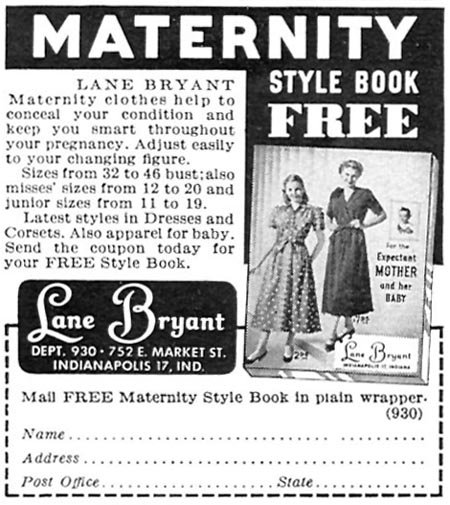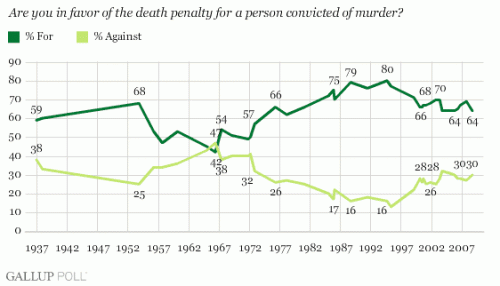Larry Harnisch, of the Daily Mirror, who spends a lot of time at his job going through the L.A. Times‘ archives, found this story from 1969:

Of course, most airlines had strict requirements for flight attendants’ physical appearance, including weight limits and guidelines for hair and makeup. But Renwick argued that her hair was much shorter than many White flight attendants’ hair. Many in the African American community felt she was being punished not for the length of her hair, but for wearing it in a natural style instead of straightening it. United eventually paid her $5,000, “endors[ed] the Afro hairstyle,” and offered her her job back, and offer she did not accept.
Also check out our recent post on Chris Rock’s documentary Good Hair.
In a completely unrelated post, I found this advertisement for the movie Staircase on Larry’s blog:

Text:
What makes a man live with another man? What makes them claw at each other…humiliate each other…yet never leave each other?
Under the title “Staircase” it says “the story of a marriage made in hell.” Larry says, “Rex Harrison and Richard Burton play two hairdressers who live together…”
Larry’s post also includes a review from September 26, 1969, that contains the following memorable phrases (the image is too small to read if I post it here, so click over to Larry’s post to see it):
…a pair of querulous old queans [sic]
They are bitchiness itself…
…two failed half-men…
…the boys’ ghastly mothers…
…what, with the deepest of ironies, is called the gay world.
That’s something else, eh?






